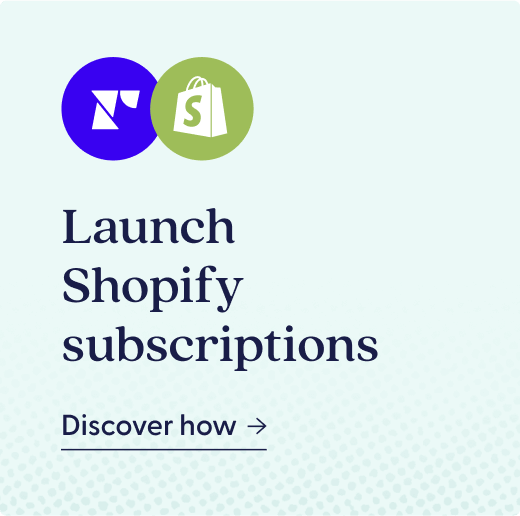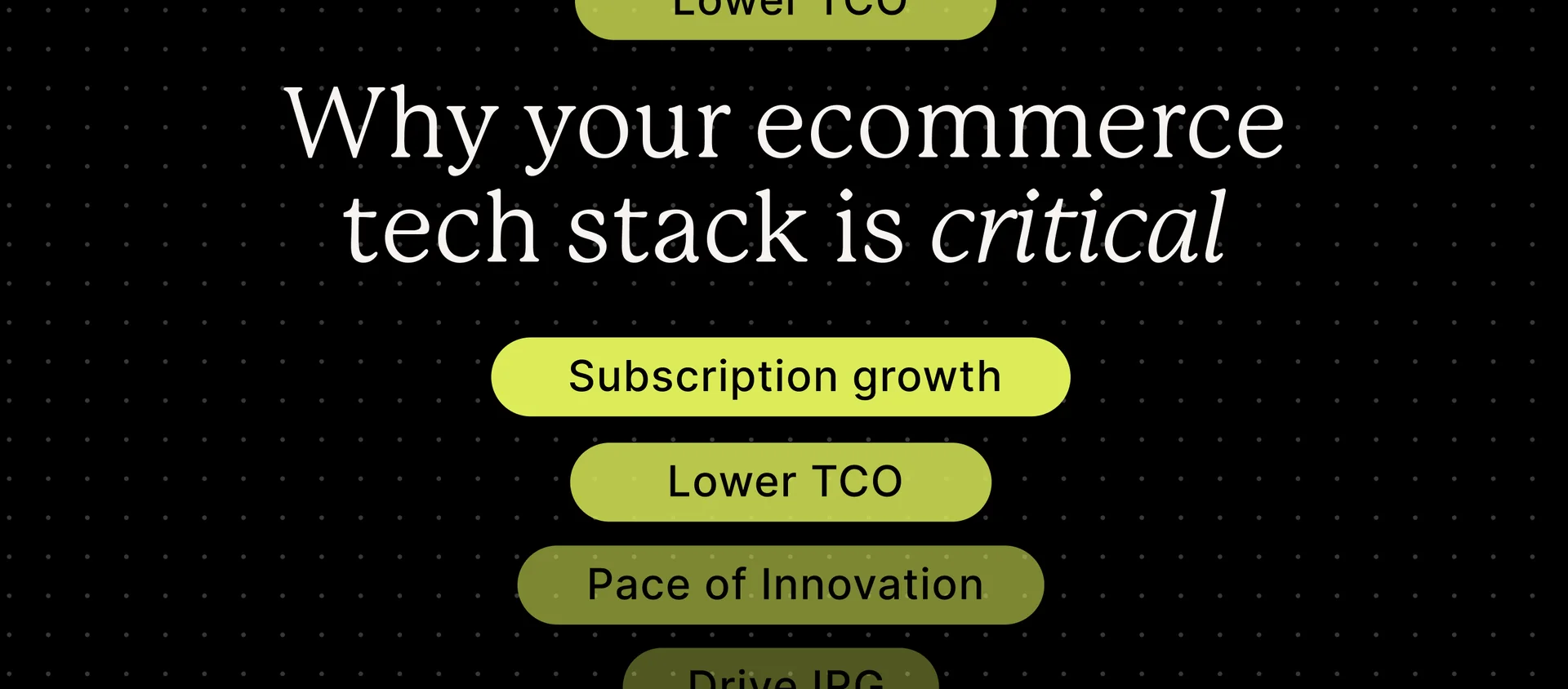Businesses and consumers in the US are currently responding to a series of new tariffs levied on imports to the country. Goods from China are the most severely impacted, with most types of products incurring a cumulative 145% duty. Virtually every industry is now adjusting course in response.
To understand how the ecommerce industry in particular is responding and how brands can navigate the new regulations, Recharge assembled a panel of experts at ChargeX, our annual subscription commerce conference. Here are the insights and recommendations they shared in a session moderated by Lindy Crea, Recharge’s Vice President of Partnerships & Solutions.
Key takeaways
- Tariffs will increase costs for ecommerce brands, especially those sourcing from or manufacturing in China. Many are now looking for new ways to safeguard margins.
- Brands can best prepare by maximizing their cash on hand, reducing non-critical costs, and anticipating various financial scenarios.
- Supply chain is a crucial area to evaluate costs in. Sourcing, production, packaging, warehousing, distribution, and transportation all present room for optimization.
- Pivoting to lower-cost, higher-margin products can help make brands more sustainable.
Your costs will increase. There’s no one right answer
With the tariffs impacting goods up and down the supply chain, every brand is likely to face price increases. If you’re considering passing the price increases on to customers, you’re not alone—an EY poll of 4000 executives found that over 70% planned to pass at least 50% of tariff costs on to customers.
In addition to the costs themselves, brands will also have to decide how (or whether) to communicate cost increases to customers. Dale Traxler, Shopify’s Director of Technology Partnerships, notes that Shopify brands who increase prices to offset the tariffs can also opt to either note tariff surcharges as a separate line item at checkout or simply roll them into product prices.
The right answer will be different for every brand, depending on factors like unit economics, margins, and customer price sensitivity—in other words, finding the balance between cost increases and customer satisfaction.
Not all customers are equally price-sensitive
Scott Wallace, founder and CEO of kids’ cooking subscription brand I’m The Chef Too, noted that while his brand started raising prices quickly in response to the tariffs (and opted to raise list prices instead of adding a tariff surcharge), customers seemed unconcerned: “Most of [our customers] wouldn’t be able to tell us if [our product cost] $34.95 or $36.95. They’re looking at mostly what the discount offers are…and then what value we’re giving.”
The lesson: Not every price increase will cause a commensurate drop in sales. Brands trading in luxury items or experiential offers like I’m The Chef Too may find their customers more amenable to a slight bump. On the other hand, brands specializing in commodities or everyday essentials may have less wiggle room before customers opt for a lower-cost alternative or cut a product out of their routine.
Reduce supply chain costs & inefficiencies
Tariffs are essentially a logistics cost, and you’ll find plenty of opportunity to offset them within your supply chain. Austin Smith, founder of logistics agency Best and Basic, recommends scrutinizing every step from packaging to final mile.
Sell off excess inventory
If old product is sitting on shelves and running up your warehouse fees, Smith says now is the time to launch clearance sales or liquidate. Even defective products and bad batches are fair game, he says, noting that one brand repurposed a batch of 1000 units with defective packaging into a limited-run promotion. The batch sold out completely.
With consumers facing the prospect of dramatic price increases, they may be more eager than ever to get factory seconds or out-of-season stock at a discount.
Consolidate steps in your supply chain
There are plenty of places to save after the product leaves the warehouse. Each time a product arrives at or departs another location, its cost rises. “Some [logistics touchpoints] could be 50 cents a touch, 25 cents a touch,” adding that flat cost to each product shipped, Smith says. Brands need to consider how to go “from ten touches to eight touches and so on” to minimize the number of steps with incremental cost increases.
Visit facilities in person to uncover inefficiencies
While you’re evaluating all of these costs, Smith cautions against doing so purely on paper. “Get to your facilities. I know this is a hard one, [but it] will give you a lot of insight into maybe how you’re doing things inefficiently.”
One brand had developed elaborate custom packaging that seemed viable in demos; a trip to their production facility, however, revealed that the packaging added a full minute to the packing process for each unit. The brand quickly decided to switch to simpler packaging.
Relocate & consolidate logistics nodes
As your customer base grows, you may find your brand shipping orders far from your original logistics network. Smith noted that the extra costs could be considerable. “If you’re doing 70% of your shipments [to the] East Coast, I highly recommend you look at a fulfillment center closer to your customers. It’s absolutely going to [have] a massive impact [on] your shipping costs.”
If you have customers all over the country, then opting for multiple nodes may seem like an appealing option. Not so fast, Smith says. “You’re going to get greater efficiency going out of one singular node in the middle of the country. Transferring your inventory back and forth, [split shipping], those indirect costs are killing you.”
Maximize cash on hand & minimize expenses
Though blanket tariffs may cause price increases across the board for your brand, mitigating costs will require a more precise approach. Alex Ledoux, co-founder of private equity firm Karta Ventures, recommends that brands prepare to tighten their expenditure and turn to other sources of funding.
Anticipate setbacks—and your responses
First try playing out a variety of scenarios to determine your company’s financial readiness. “What does it look like if acquisition cost goes up 20%? Wow. [If] revenue goes down 20%, can you survive that? If you’re a subscription business, what does it look like if your LTV [drops 20%]? Can you survive that? The D2C debt landscape has already been in a very challenging situation…if your million-dollar line of credit gets pulled overnight, can you survive that?”
These scenarios should help you identify which costs will be most difficult to sustain. “If it’s a mission-critical expense, we’re contacting that vendor [to work on options].”
Secure financing from manufacturing partners
When margins narrow, Ledoux recommends exploring how your partners may help you shoulder the burden. “Lean on your manufacturers. They really are an extension of your bank. Almost every exporter can get export financing from their bank [at] a 2-5% interest rate, which is obviously way cheaper than anyone can here.”
Be prepared to pivot
It’s impossible to predict the exact impact the tariffs will have on any brand. For some, staying the course will become untenable, but an adjustment may make them more sustainable in the long run.
Traxler recalls that during the 2008 recession, his jewelry supply company was forced to pivot away from silver after a series of dramatic price increases. Searching for a more economical material, the company turned to copper, which turned out to be less a compromise than a blessing—copper’s low cost enabled margins of 800-1000%, ultimately resulting in the brand recentering itself around copper altogether.
Brands navigating today’s margin pressures have an opportunity to rethink and strengthen their business models. By evaluating how to protect margins, secure smart financing, and fine-tune products and pricing to exceed customer expectations, companies can lay the groundwork for long-term sustainability. What you sell today doesn’t have to define your future—adapting with intention could be the transformation that unlocks new growth and resilience.
Seeking clarity amid uncertainty
While the full impact of new regulations is still unfolding, one thing is clear: uncertainty is a powerful prompt to reassess. It’s always the right time to evaluate your business model, optimize your P&L, and ensure you’re delivering real value to your customers. At Recharge, we’re committed to helping brands navigate this evolving landscape with clarity, insight, and strategic support.



